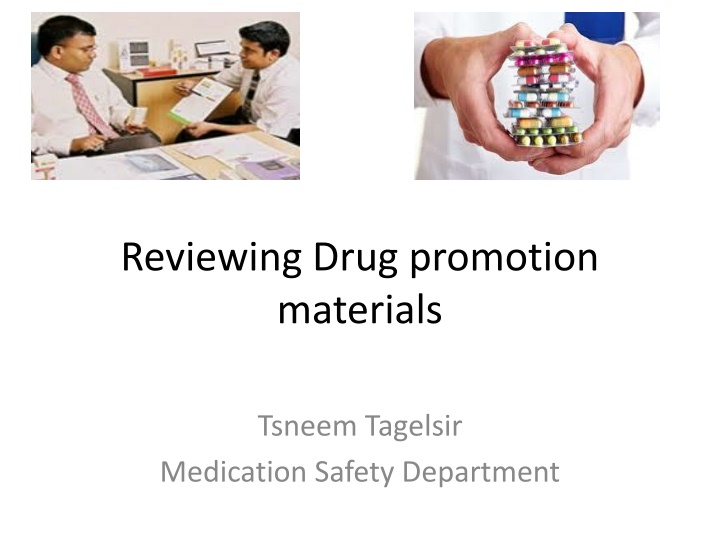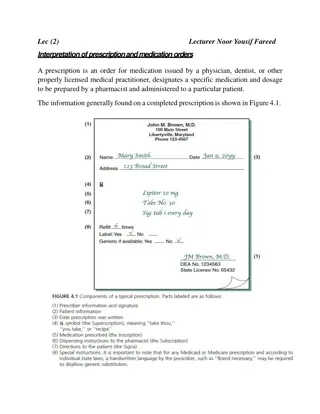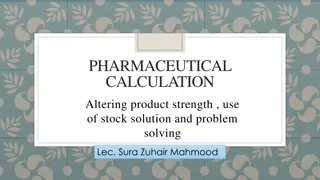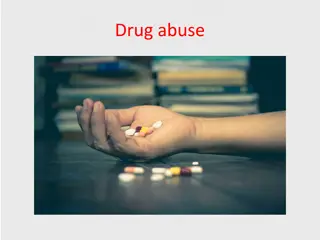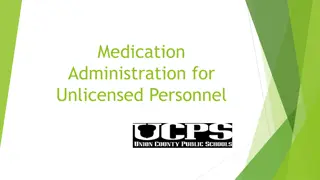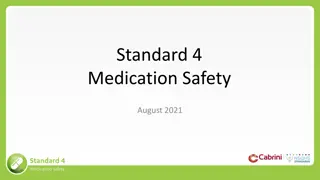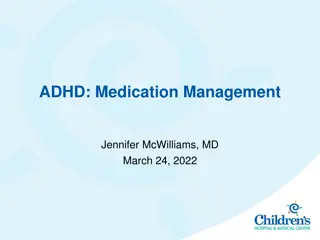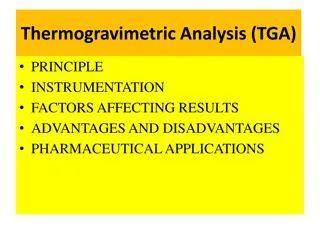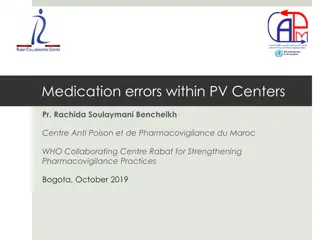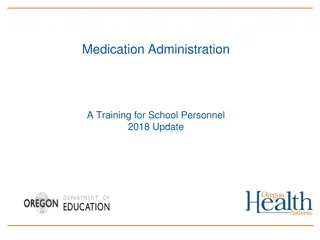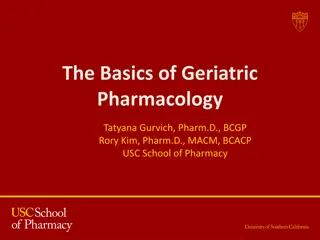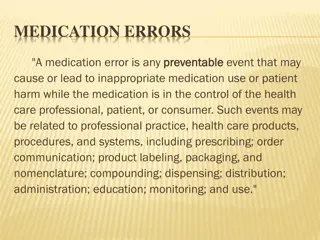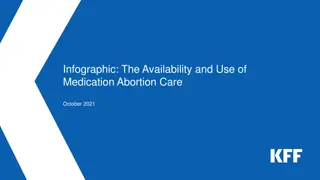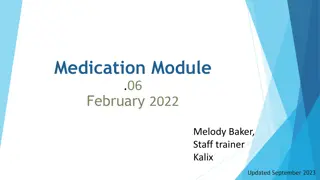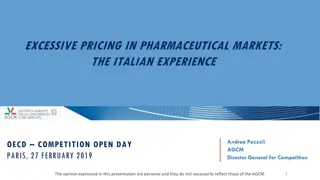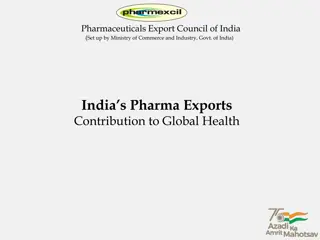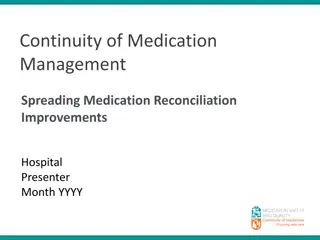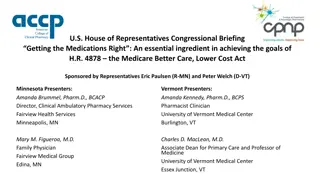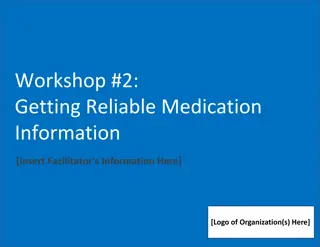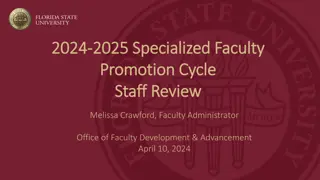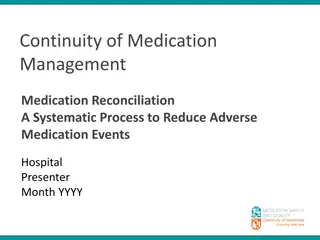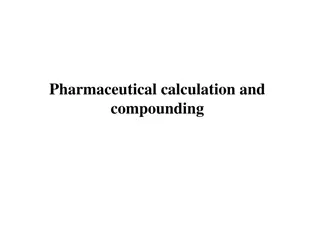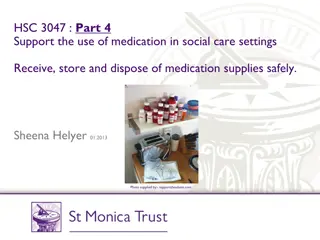Medication Promotion in the Pharmaceutical Industry
Drug promotion materials play a vital role in influencing the prescription, supply, and use of medicinal drugs. This article delves into different forms of promotion such as verbal and written methods, highlighting the responsibility of the pharmaceutical industry to provide accurate and non-misleading information. It discusses the impact of promotion on doctors' prescribing patterns and the industry's pivotal role as a source of medication information for healthcare professionals in developing countries.
Download Presentation

Please find below an Image/Link to download the presentation.
The content on the website is provided AS IS for your information and personal use only. It may not be sold, licensed, or shared on other websites without obtaining consent from the author.If you encounter any issues during the download, it is possible that the publisher has removed the file from their server.
You are allowed to download the files provided on this website for personal or commercial use, subject to the condition that they are used lawfully. All files are the property of their respective owners.
The content on the website is provided AS IS for your information and personal use only. It may not be sold, licensed, or shared on other websites without obtaining consent from the author.
E N D
Presentation Transcript
Reviewing Drug promotion materials Tsneem Tagelsir Medication Safety Department
Promotion? All the informational and persuasive activities by manufactures and distributors in order to induce the prescription, supply, purchase and / or use of medicinal drugs. (WHO,1988 )
Promotion can be : Verbal Written
Verbal ( Detailing, conferences, seminars , KOLs sessions & lectures ). Pharmaceutical companies generally engage key opinion leaders (KOL) early in the drug development process to provide advocacy activity and key marketing feedback.
Written : medication information , (Brochures, journal advertisements , package inserts , journal reprints ; outer packs, etc).
The pharmaceutical industry is the primary source of information about its products and recognizes its responsibility for ensuring that this information is accurate and does not mislead.
Promotion. All promotion-making claims concerning medicinal drugs should be reliable, accurate, truthful informative, balanced, up-to-date, capable of substantiation and in good taste. They should not contain misleading or unverifiable statements or omissions likely to induce medically unjustifiable drug use or to give rise to undue risks.
The effect of promotion on doctors prescribing patterns or behaviors, is well established, and well documented in the literature, though many of them deny that ,or partially admit. Orolowski et al.,1992
The pharmaceutical industry represents the main, if not the only, source of medication information for HCPs in the developing countries ,including Sudan.
Samples , gifts, food, traveling abroad , conference , seminars, sponsorships and donations of different kinds , are all ultimately paid for by the patients.
Situation in Sudan Out of (655) Sudanese doctors screened by Idris et al,2012; (97%) asserted that they wholly depend on medication information provided by the pharmaceutical industry representatives.
Studies of interactions between Doctors & sales reps, have found that little information is provided to doctors by sales reps. about safety comparative data and product prices; and they mostly exaggerate the merits of their products. Shear,BlackL,Lexchin ,1996
Sixty six (66 ) sales representatives consistently failed to mention side effects, contraindication & drug- interactions in about 75% of visits & the drug indications were extended or changed , in about one quarter (25%) of times. Becel et al . Prescrire international 1995 ; 4 ( 18 ) : 120 -122
Promoted products attributes mentioned by the medical representatives during visits to doctors and pharmacists/Sudan Products attribute mentioned Trade name Indications Dose Generic name Price Contra-indications Precautions Drug interactions Side effects Percentage (% age) 90.6 75.6 70.0 53.8 50.0 40.0 34.4 30.6 4.4
Even in Germany: Marketing brochures sent out by drug companies to GPs in Germany have shown that 94% of the information ,in them , has no basis in scientific evidence Tuffs . Only 6% of drug advertising is supported by evidence. BMJ 2004;328:485.
REVIEWING THE PROMOTIONAL PRESENTATIONS
1- FIRST STEP: REVIEW THE FOLLOWING POINTS
The presentation should usually contain: 1. The name(s) of the active ingredient(s) using either international nonproprietary names (INN) or the approved generic name of the drug; or each active substance. 2. The brand name. 3. Content of active ingredient(s) per dosage form or regimen.
First step: 4. Name of other ingredients known to cause problems. 5. Pharmacological data: a brief description of pharmacological effects and mechanism of action. 6. Approved therapeutic uses or indications; one or more of the therapeutic indications for the product consistent with the terms of the license.
First step: 7. Dosage form or regimen and relevant pharmacokinetic data: average and range for adults and children; dosing interval; average duration of treatment; special situations, e.g., renal, hepatic, cardiac, or nutritional insufficiencies that require either increased or reduced dosage.
First step: 8. Side-effects and major adverse drug reactions: Side-effects for certain products may be quite extensive. As a minimum, the information should indicate all the common side effects likely to be encountered in clinical practice and also those which are rarer but may be serious. 9. Precautions, contra-indications and warnings (reference to pregnancy, lactation, etc).
First step: 10. Major interactions. 11. Name and address of manufacturer or distributor. 12. Reference to scientific literature as appropriate.
Check the information listed above is correct, accurate, and balanced. SECOND STEP:
Second step: The presentation as general must: 1. Comply with the particulars listed in the summary of product characteristics (SPC). A presentation must not promote a medicine outside the therapeutic indications listed in the SPC for that medicine. A presentation cannot promote a medicine for off label indications. Nor can a presentation promote a medicine for use by a patient group not indicated.
Second step: A presentation may include statements or specific information not included in the SPC; for example if the SPC makes no mention of any comparative study then a comparative study would be permitted in presentation, provided it related to the licensed use of the product and was supported by robust evidence. But where the current SPC reports that a comparative study shows non-inferiority and a new study becomes available showing superiority, the SPC would need to be amended before a superiority claim could be made in presentation.
Second step: The presentation must not include information about planned or ongoing trials in unlicensed as seen as promoting the unlicensed indications.
Second step: The presentation as general must: 2. Encourage the rational use of the product by presenting it objectively and without exaggerating its qualities: A presentation must encourage the correct and proper use of a medicine. This might include when a medicine should be taken, how much should be taken, the route of administration, by whom it should be taken and special precautions.
Second step: The factual accuracy should be independently verifiable. For example, a presentation for a product offering symptomatic relief should not imply that it cures the underlying condition.
Second step: A presentation that includes data, trials or studies that are not presented accurately or in context would be considered as exaggerating the properties of a product. Where a relative change is quoted, the absolute values should also be given to enable the audient to fully assess the magnitude of the claimed benefit.
Second step: The presented findings from in vitro or animal studies as directly relevant to the clinical use of the product may also be considered to exaggerate the benefits of the product, unless data are available to demonstrate the relevance and significance of the findings.
Second step: The presentation as general must: 3. Not be misleading. Misleading can be due to the overall impression given. Unrealistic or inappropriate images can give rise to misleading expectations about the product or the indicated patient population. An example could be the use of a driving image in an advertisement for a medicine where caution is required over impairment of driving ability.
A critical appraisal for studies or researches. THIRD STEP:
Third step: In case of information in the material that based on studies or researches, a critical appraisal must be done to ensure the quality of the information provided.
Critical appraisal? Critical appraisal is the process of carefully and systematically assessing the outcome of scientific research (evidence) to judge its trustworthiness, value and relevance in a particular context. Critical appraisal looks at the way a study is conducted and examines factors such as internal validity, generalizability and relevance.
Evidence-based medicine is a process for making disease management decisions by evaluating and rating the quality of studies. For the pharmacist, this means combining drug literature evaluation skills with the knowledge of clinical trial design to determine the usefulness and reliability of clinical trial results.
some free-access Internet sites of value for the HCP interested in providing quality DI.
Available databases can assist HCPs in grading the evidence in the literature. However, drug literature evaluation skills are still required for the decision as to whether the evidence applies to the HCP s patients and practice site.
In medication safety department, Khartoum state: We use DI resources like medicinescomplete and manyothers to review the materials in addition to the use of the critical appraisal skills to evaluate the clinical study data.
